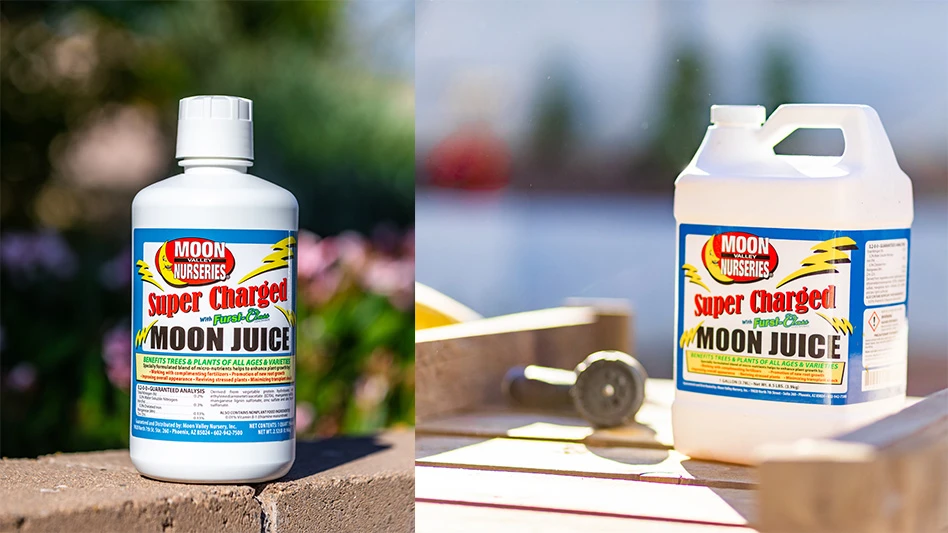It is easy for growers to recognize that there are insects on their crops. Scouting for insect pests is important, but before you mix up your spray tank, don’t forget to make sure your pests are still alive. One of the key indicators that a spray may not be needed is exit holes in the host. Finding these little exit holes can save you time and money as well as conserve your good bugs.
{sidebar id=66}
Here’s a look at several common parasites.
Aphid parasites
Aphids are a very common, but interesting, group. They come in colors ranging from pink to green to black. Even though they can appear very different, they all have one thing in common, cornicles. These are two “tail pipe”-like structures of variable lengths that stick out the backside of all aphids. The other common aphid feature is their amazing ability to reproduce. For the most part, only female aphids are found in spring and summer. They are commonly born pregnant and have the ability to reproduce without mating, so males are not needed.
Aphids are typically found on new growth, but they can be found on plant roots as well. They damage plants by inserting strawlike mouthparts into plant tissue and then sucking the sap from the plants’ conductive tissue. This can cause deformed growth or discoloration. Before you go get pesticides ready, take a closer look to see if this is really necessary. Your pests may be dead already.
When you look closely at aphids, they are rather helpless. They do not have a hard exoskeleton to protect them. They do not sting or bite. They can’t even run away very fast. This leaves them very vulnerable to predators and parasites. Ladybird beetles love to feed on aphids, but there are other unseen beneficials out there with the same tastes. So before you spray, take a closer look and make sure these tiny good guys have not already killed your pesky aphids.
How do you know if beneficials have been there? Well, just get down close and take a look with your 10x hand lens. Your chances of seeing the dark, 2- to 3-millimeter-long adult parasitic wasps are slim, but you can see the dead bodies of the aphids, which are often mistaken for live ones.
Tiny wasps, often the species Aphidius colemani, find a host aphid. The female wasp lays an egg inside of the helpless aphid. In a few days the aphid dies and then the dead body starts to swell. Inside this suffering aphid, the immature wasp is developing and will eventually emerge as an adult. During this time, the dead aphid’s body turns golden-brown and stays stuck to the plant material. When the wasp is ready to leave its host, it will cut a small hole in the back of the dead aphid’s abdomen to escape. This exit hole is easily seen with your 10x lens. Once the wasp flies off, the empty dead aphid may remain stuck to the plant for weeks. It is the carcasses that often lead people to believe they still have aphids.
If you find these parasites in your operation, the chances of you needing to spray pesticides for aphids is slim. These parasites are very efficient; each female can attack up to 300 aphids. These wasps are often found naturally, but if you want to boost your numbers, they are available from several insectaries like Syngenta Bioline, BioBest and Koppert. If aphid populations are extremely high, and an initial knockdown spray may be needed, try to use an insecticidal soap. A product like Endeavor will not harm beneficials.
Scale parasites
Scale insects are another pest that parasites often attack, but the attack goes unnoticed. This is because both live and parasitized scales appear very similar. Accurate scouting can help you out in this situation. Before mixing up your pesticide spray, inspect the scales to make sure there are no exit holes made by helpful parasites. There is a whole array of scale parasites out there, just hunting for a host insect. It’s almost the same cycle as the aphid parasites, except you do not get the nice swelling and color change. One of the most obvious ways you will know for sure if you have parasites at work is if you find exit holes on the scale. You may also find adults stuck to your yellow sticky cards (sticky cards do not discriminate, they trap good insects as well as pests).
If you find some exit holes in the scales and some without, remember those without may be parasitized already (it’s just that the adult has not emerged yet). Even after the parasite has left its host, the dead body of the scale can stay attached to plant material for several weeks. Reducing pesticide sprays will conserve your naturally occurring predators and parasites.
If a spray is needed for a knockdown, make sure you select a product that will be soft on your beneficial parasites. Go for things like horticultural oils and soaps. These work on contact, leaving no residue to affect the newly hatching parasites.
Unfortunately, there are very limited numbers of scale parasites commercially available, so your best plan of attack is to conserve the naturally occurring ones.
Caterpillar parasites
Sometimes beneficial parasites like to complete their life cycle on the outside of their hosts. You often see this with caterpillars. People often see them with what they call “eggs” sticking out of their bodies. Those are actually the pupil cases of parasitic Braconid wasps. The adult female wasp inserts eggs beneath the caterpillar’s skin. Once hatched, the larvae feed on the caterpillar until they are ready to pupate. At this point, the wasp larvae pop out of the dead caterpillar’s body, forming very recognizable cocoons. The adults then hatch, flying off to start the life cycle over again.
If you see caterpillars with white pupae present, you may not want to spray because these naturally occurring parasites may have controlled the problem for you. Unfortunately, these parasites are not commercially available. Again, conservation of existing beneficials is your best strategy.
Wasp parasites will go after caterpillar eggs. Many belong in the genus Trichogramma. Several species are available commercially, so if you buy these parasites, get the right species for your situation.
I was once at a greenhouse where the manager had employees pick parasitized caterpillars off plants to take them out of the greenhouse. They didn’t realize they were removing the good bugs that were controlling pests.
Ladybird beetles parasites
Ladybird beetles are considered the poster child of biological control. Even though they are one of the good guys, they can be attacked by parasites. Now these are a different species than the ones that attack pest insects. One of the more common ladybird beetle parasites is Dinocampus coccinellae. It has been recorded in
Last year, researchers purchased wild harvests of ladybird beetles (a common practice by many people) and found that 3-15 percent had been parasitized. This is one reason to buy beneficial insects from an insectary that rears them in a lab. Purchasing wild-harvested insects is just asking for trouble.
{sidebar id=2}
- Suzanne Wainwright-Evans
June 2008
Latest from Nursery Management
- Society of American Florists accepting entries for 2025 Marketer of the Year Contest
- Sustainabloom launches Wholesale Nickel Program to support floriculture sustainability
- American Horticultural Society welcomes five new board members
- American Floral Endowment establishes Demaree Family Floriculture Advancement Fund
- The Growth Industry Episode 3: Across the Pond with Neville Stein
- The Growth Industry Episode 2: Emily Showalter on how Willoway Nurseries transformed its business
- March 2025 issue recap
- Gratitude as a marketing strategy





